NATURE'S EXTRAVAGANZA – NORTH ISLAND NEW ZEALAND
by Irene Butler
(For Travel Writers' Tales)
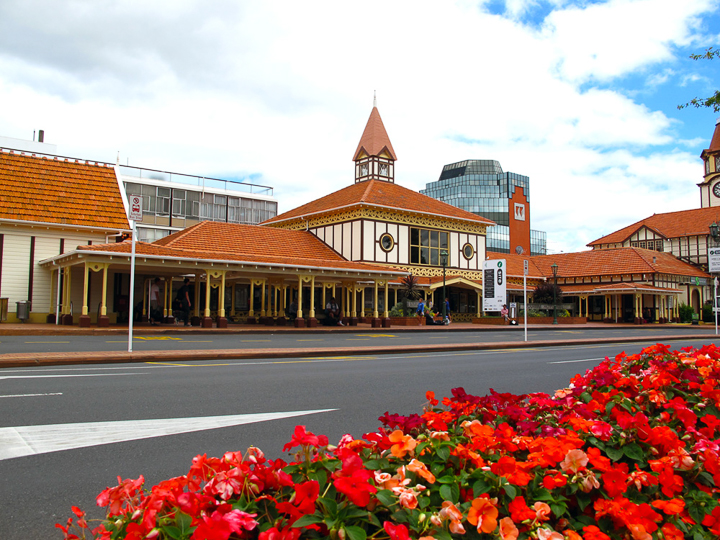
Town of Rotorua
Travellers flock to Rotorua – with good reason – it's the hub to one of the most active geothermal areas in the world. The “hard-boiled-egg” smell around town is a reminder of the hydrogen sulphide ( H2S) associated with geothermal activity, but the sights are worth occasional nose wrinkling.
The famed Pohutu Geyser is at the southern edge of town in Te Whakarewarewa Thermal Reserve. My husband Rick and I wait before a gigantic mound of rock with small spurts of steam escaping from large central crevices. Pohutu erupts on average twenty times a day. Mother Nature gives a warning signal in that the nearby smaller Prince of Wales Feathers geyser spews its scalding water first…and it does just that with a startling whoosh!
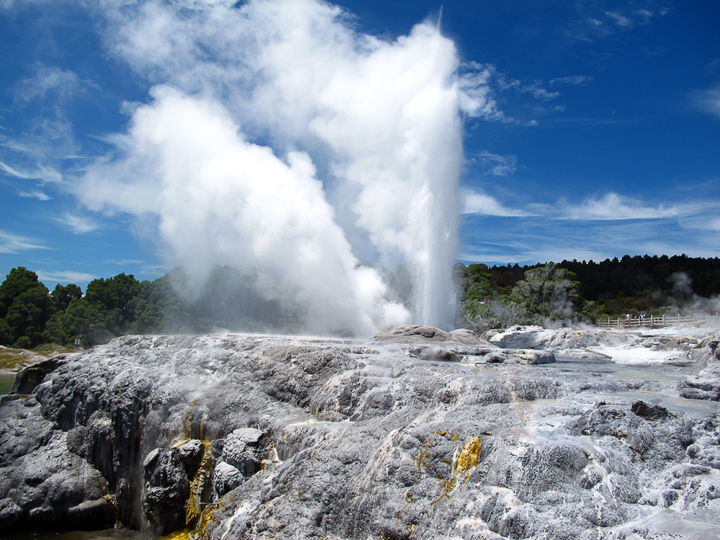
Pohutu Geyser
Within minutes the ground rumbles and the mighty Pohutu sends voluminous columns of water higher and higher with firehose force until it reaches heights of 30m (100ft). Mega-gallons of spray glint in the sun, then fall in scalding cascades over the edge of the rocky mound. The drama lasts a breathtaking 15 minutes before the Pohutu giant is spent….for now.
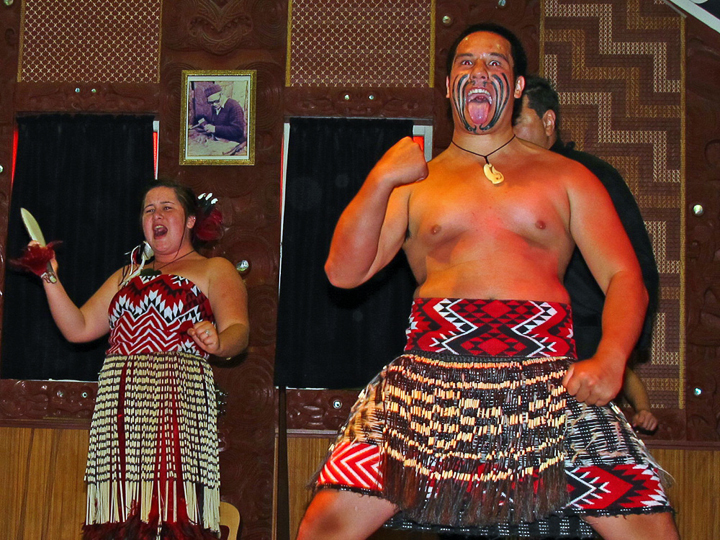
Haka Warrior Dance
It's time to learn about the first peoples to settle New Zealand, the Maori, at the Reserve's weaving and wood carving schools, followed by an evening cultural show of song and dance. The Maori women swing poi (balls on strings) with great finesse, and the men's “haka” warrior dance is a roaring success with its resounding chants, vigorous movement and facial distortions of bulging eyes and protruding tongues.
Early the next morning we aim our rental car towards Rotorua District's Wai-O-Tapu for the10:15 a.m. eruption of the Lady Knox Geyser. How does this occur at the same time daily? Well, at this site nature has a helping hand from Fred, the park ranger, who pours a little bag of organic soap into its funnel-like opening. He explains, “ The soap breaks the surface tension of cooler water in the geyser's upper chamber so that it mixes with the hot water below, releasing it to shoot to the surface.”
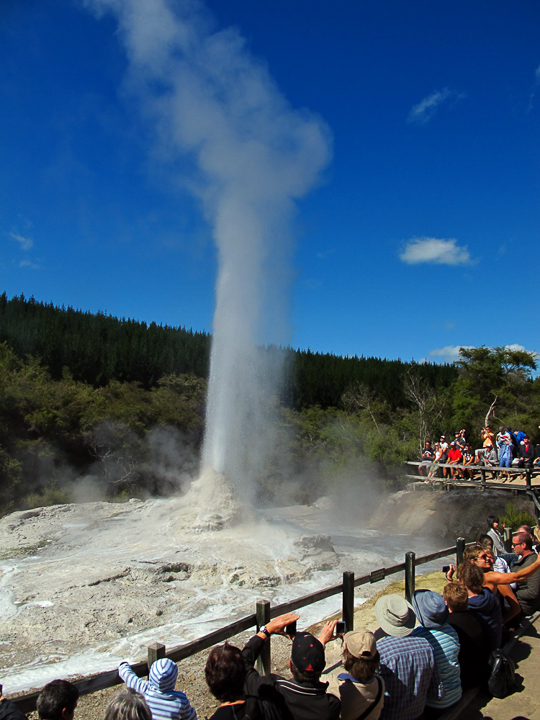
Lady Knox Geyser
The Lady Knox bubbles and froths, erupting to a height of 12m – a bit melodramatic after Pohutu.
But Wai-O-Tapu is not called the “Thermal Wonderland” for naught. It covers 18sq km of collapsed craters from volcanic activity eons ago. Champagne Pool and Artist's Palette are perfect monikers for the bubbling 100°C pools, steaming fumaroles, and patches of dynamic red, green, yellow, orange, white and black produced by different mineral elements. Spectacular!
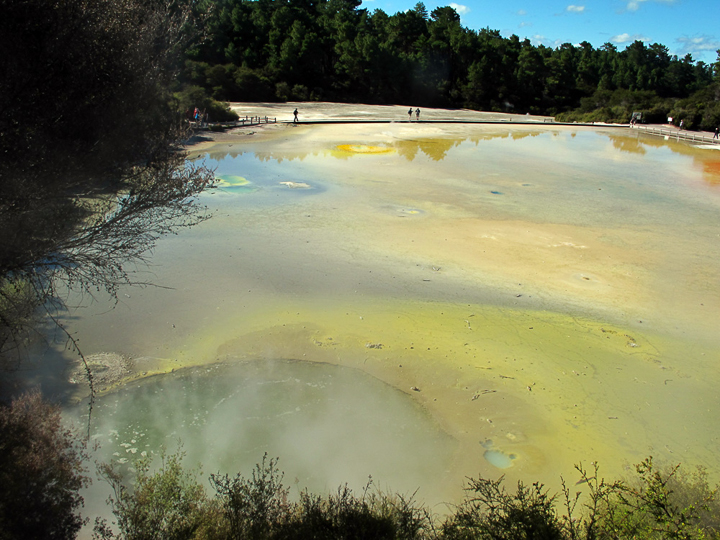
Wai-O-Tapu thermal pool
The next day's two-hour scenic drive is through the Waitomo District of verdant valleys, fields of corn, grazing sheep and cattle. It boggles my mind knowing that underneath these hills are 300 known limestone caves.
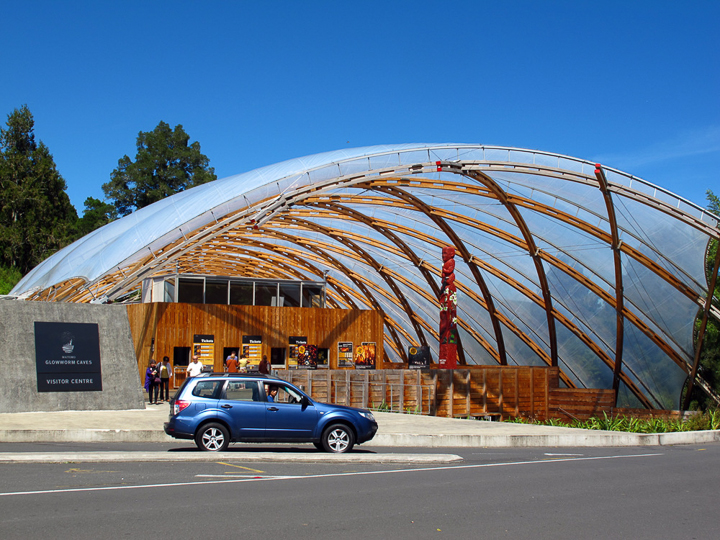
Waitomo Visitor Centre
We arrive at the Waitomo Visitor's Centre to see some caves open to the public.
Before entering the Glowworm Cave we are given a 101 lesson on the lifecycle of the glowworm ( arachnocampa luminosa ). The female lays around 120 eggs, which hatch into larvae. The larvae build nests and put down sticky lines to trap insects for food, emitting a light from their tail to attract their prey (this bioluminescence is a reaction between chemicals given off by the glowworm and oxygen in the air). After 9 months in this pupae stage they morph into adults whose only function is mating and egg laying for survival of the species.
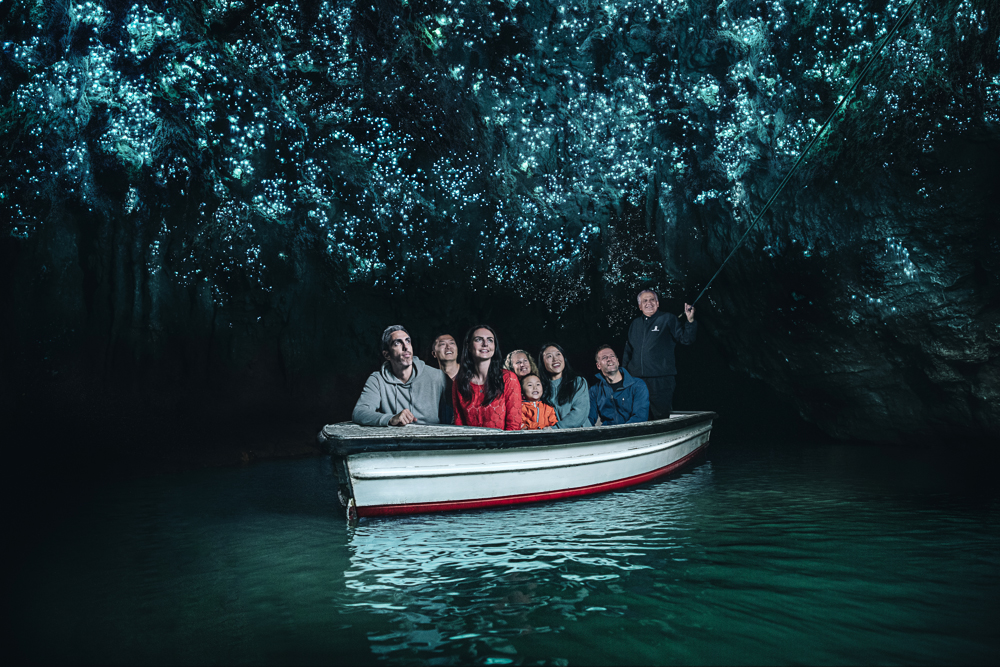
Glowworm Cave (Photo: Waitomo Glowworm Caves)
Climbing into a boat with our guide and twenty other enthusiasts, we silently drift into the dark hollows of the cave, our eyes glued to the mesmerizing milky way of millions of miniscule lights on the lofty roof. Alas no photos are allowed.
Cavernous Ruakuri Cave is next.
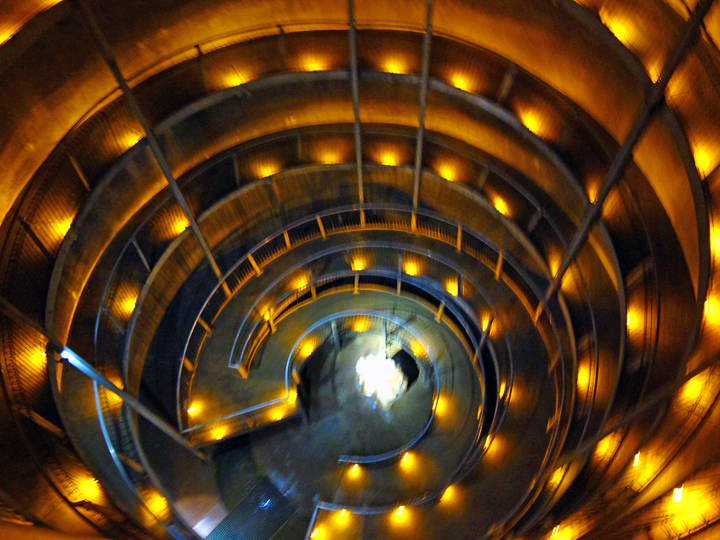
Ruakuri Cave spiral ramp
We follow Angus our guide down a spiral ramp dotted with amber lights akin to alien orbs taking us 15-metres below ground. A vast subterranean world in hues of pale yellow and soft gold spreads before us; stalactites hang en mass from ceilings, stalagmites rise like sentinels from the cave floor, some meeting in the middle to form columns.
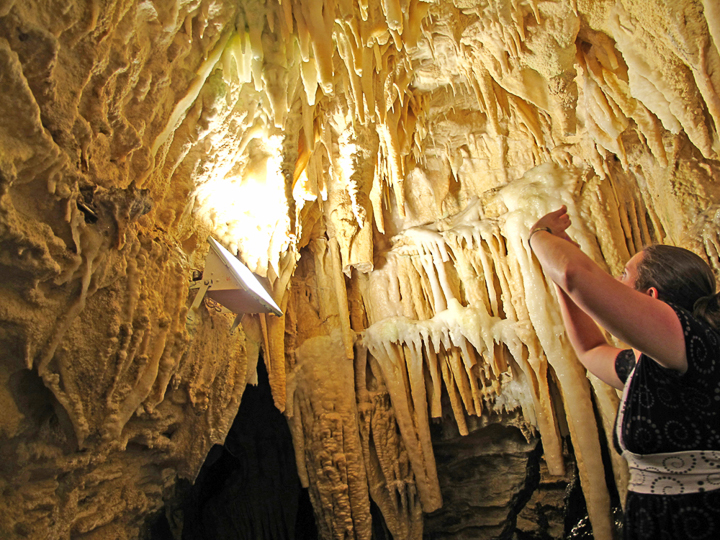
Cave rock formations
Gigantic limestone “curtains” become translucent veils when Angus holds his headlamp behind them. Underground rivers roil and dash against rocks for an eerie echoing symphony.
Near the end of the 1.6 km walk we pass a sacred burial ground of the Maori. A stone corridor takes us back to the spiral walkway to climb out of the depths and into the halogen sun, hyped by our combined Sci-fi and Indiana Jones experience. We leave New Zealand's north island “wowed” by its marvels.
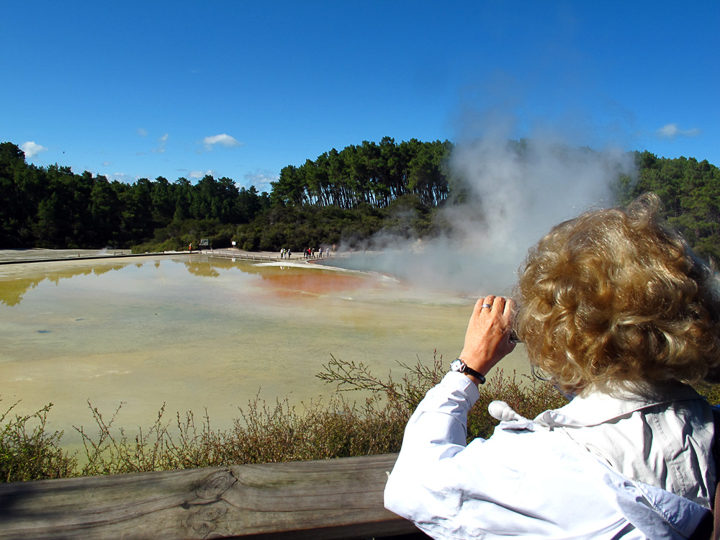
Wowed by natural wonders
__________________
Travel Writers' Tales is an independent travel article syndicate that offers professionally written travel articles to newspaper editors and publishers. To check out more, visit www.travelwriterstales.com
PHOTOS: By Rick Butler unless otherwise indicated.